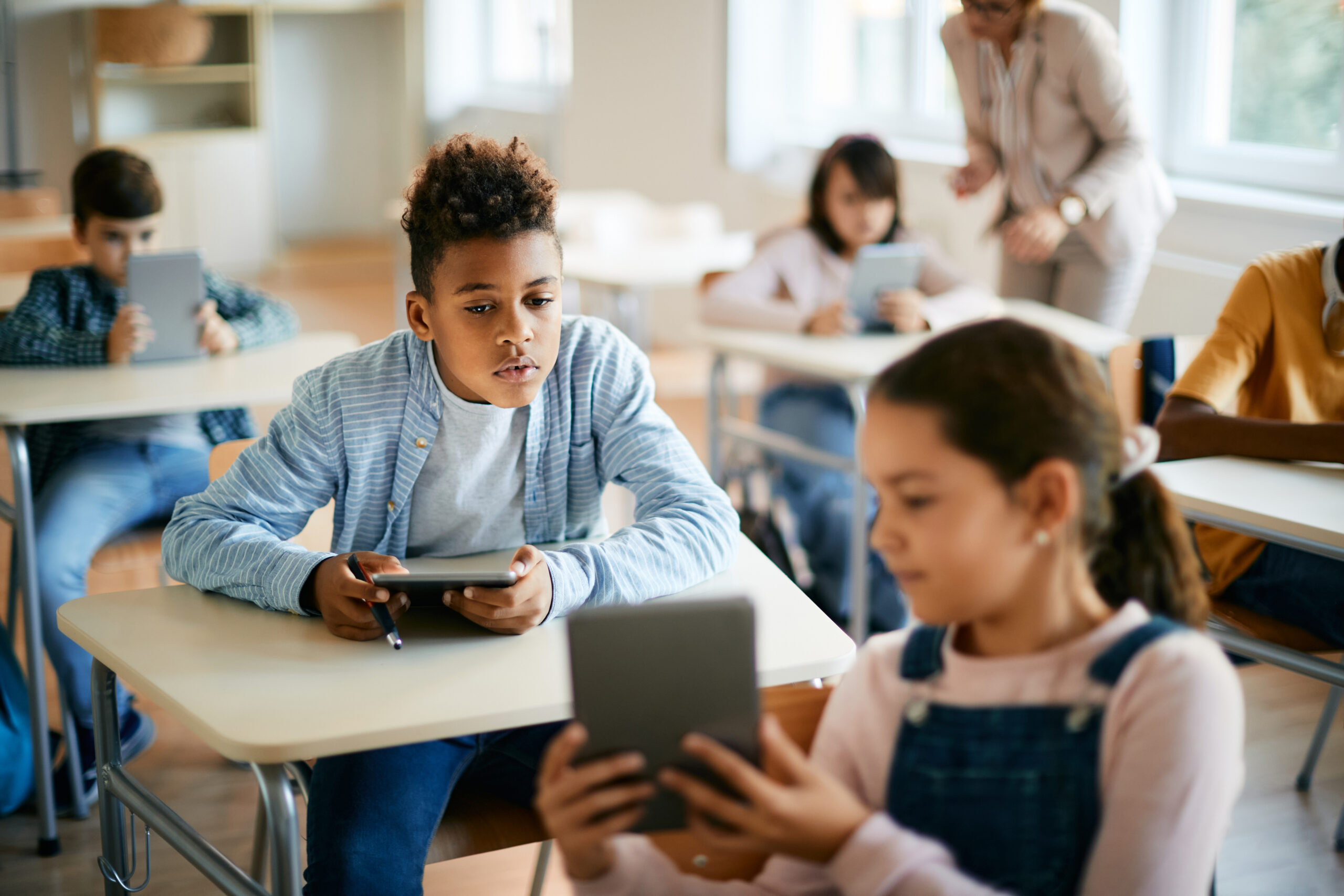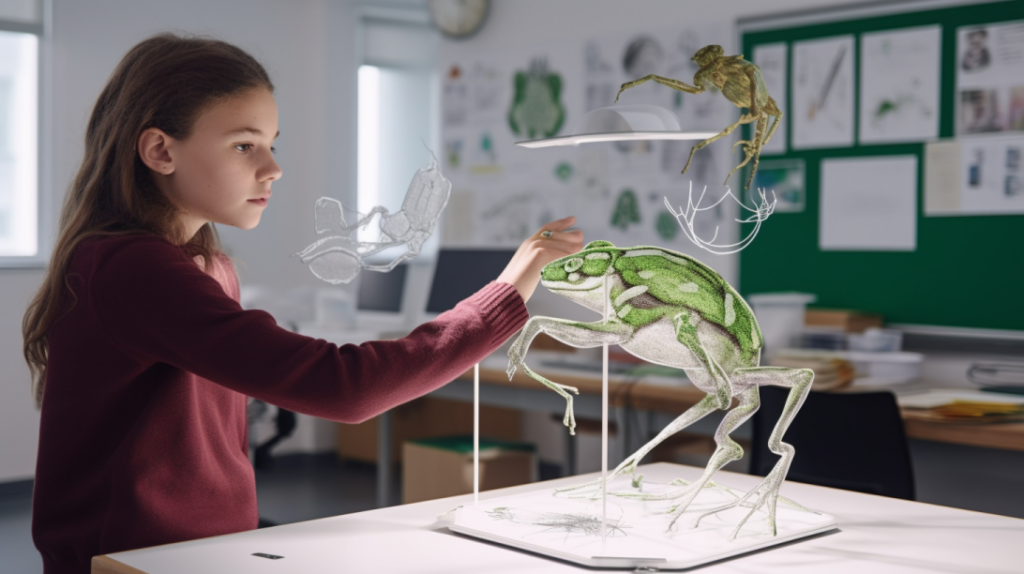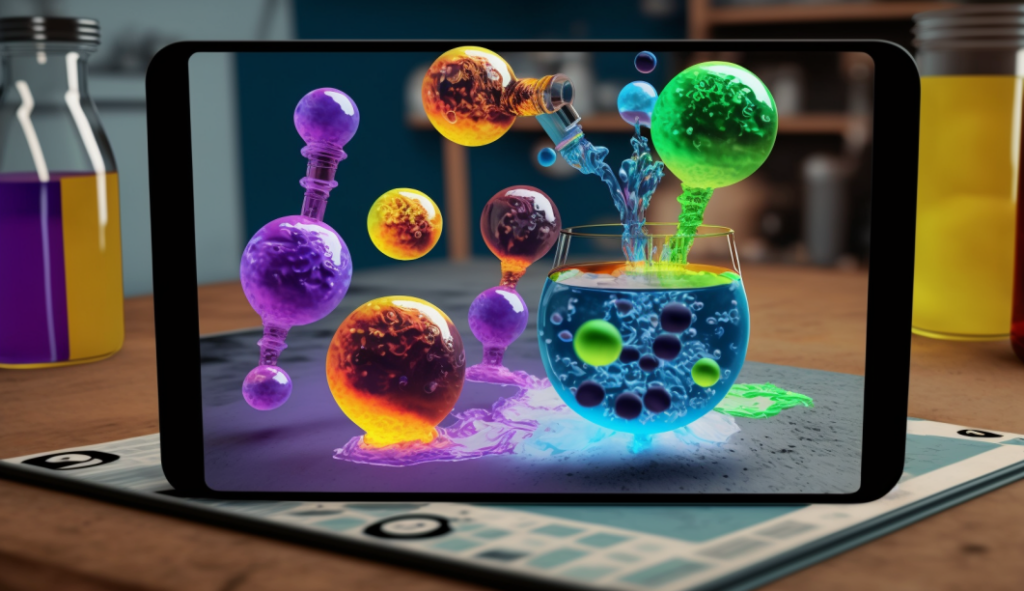
The integration of augmented reality (AR) technology in education has opened up new opportunities for students to engage with learning materials and enhance their understanding of complex concepts.
With the use of AR, students are able to immerse themselves in a 3D environment that offers a more interactive and engaging experience than traditional methods of learning. This article explores the potential of AR in education and the innovative learning methods that it offers.
What is AR?
AR is a technology that combines the physical world with digital content. It overlays digital content onto the real world, allowing users to interact with virtual objects as if they were real. In education, AR is used to enhance learning by providing students with a more interactive and engaging experience.

The Promise of Immersive Learning with AR
According to a report by the Information Technology and Innovation Foundation, AR has the potential to transform education by providing immersive learning experiences that improve student engagement and learning outcomes. It allows students to visualize complex concepts and interact with digital content in a way that enhances their understanding of the material.
The Benefits of AR in Education
It has several benefits for education, including:
Enhanced Learning Experience
Offers a more interactive and engaging learning experience that can enhance student motivation and understanding. It allows students to visualize and interact with complex concepts in a more intuitive way, making it easier to understand.
Increased Retention
Studies have shown that students who learn through AR have better retention of information than those who learn through traditional methods. This is because it offers a more immersive and memorable experience that helps students to retain information more effectively.
Personalized Learning
AR allows for personalized learning experiences tailored to each student’s needs. It offers the ability to adapt to individual learning styles and provide customized feedback and guidance.
Accessibility
AR can make education more accessible for students with disabilities. It offers the ability to create learning materials that are more accessible and inclusive, such as providing audio or visual aids.

Innovative Learning Methods Using AR
This technology offers several innovative learning methods that can enhance the learning experience for students. Some examples include:
Interactive Learning Materials
AR allows for the creation of interactive learning materials, such as 3D models or simulations. This allows students to interact with complex concepts in a more intuitive and engaging way, making it easier to understand.
Gamification
AR can be used to gamify learning by creating educational games and challenges. This offers a more fun and engaging learning experience that can motivate students to learn.
AR can also facilitate immersive learning experiences, such as virtual field trips to places students may not otherwise have access to, or simulations of historical events. For example, a social studies teacher could use AR to create an interactive experience of the American Revolution, allowing students to explore the battlefield and see key events in real time. This can help students better understand and engage with the material, making learning more exciting and meaningful.
In addition to enhancing traditional classroom learning, AR can also be used for remote and online education. With the COVID-19 pandemic, many schools have had to move to virtual learning, and AR can provide an innovative and engaging way to continue teaching students from a distance. For example, a teacher could use AR to create virtual lab experiments or interactive simulations, allowing students to still participate in hands-on learning activities even when not physically present in the classroom.
Examples of AR in Education
Several schools and universities are already using AR in the classroom. For example, the University of Maryland has developed an AR application that allows students to explore a virtual chemistry lab,. The possibilities for AR in education are endless, and educators are only beginning to scratch the surface of what is possible. Here are some of the best examples of AR in education:
- AnatomyAR+ – A platform that uses AR to provide students with a virtual dissection experience, allowing them to explore the human anatomy in 3D.
- Quiver – An AR coloring app that allows students to bring their artwork to life and interact with their creations.
- Boulevard AR – An AR platform that allows students to learn about history and culture by exploring virtual museums and exhibits.
- GeoGebra AR – An AR app that helps students visualize and understand mathematical concepts in a 3D environment.
- Circuit AR – An AR app that allows students to build and test circuits in a virtual environment.
- Language Learning with AR – An AR app that helps students learn new languages by providing interactive visual and audio content.
- Roar – An AR app that allows students to bring their school textbooks to life by overlaying digital content onto the pages.

Challenges and Future Developments
One of the biggest challenges of implementing AR in education is ensuring accessibility for all students. Not all students have access to the necessary technology or internet connection to fully engage with AR content. Additionally, the cost of implementing AR technology in schools can be prohibitive, particularly for schools with limited budgets.
Another challenge is the need for technical expertise to create and manage AR content. Educators may need additional training to effectively integrate AR into their lesson plans and manage the technology. Additionally, there is a need for more research on the effectiveness of AR in education to ensure that it is being used in the most impactful way.
Despite these challenges, the future of AR in education looks bright. As technology continues to develop and become more accessible, there will be new opportunities for innovative and immersive learning experiences. AR has the potential to transform the way students learn and engage with information, creating a more dynamic and interactive learning environment. With continued investment in research and development, AR has the potential to revolutionize education and prepare students for the challenges of the future.
Conclusion
AR technology offers a range of benefits for education and innovative learning methods that can enhance the learning experience for students. It provides a more immersive and engaging experience that can enhance retention and understanding. With the continued development of AR technology, we can expect to see even more innovative learning methods in the future.